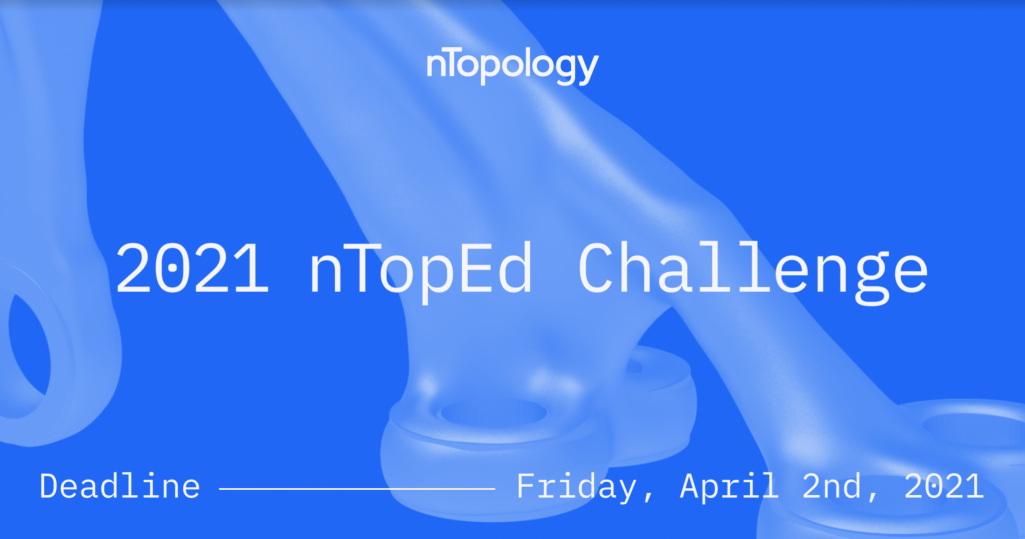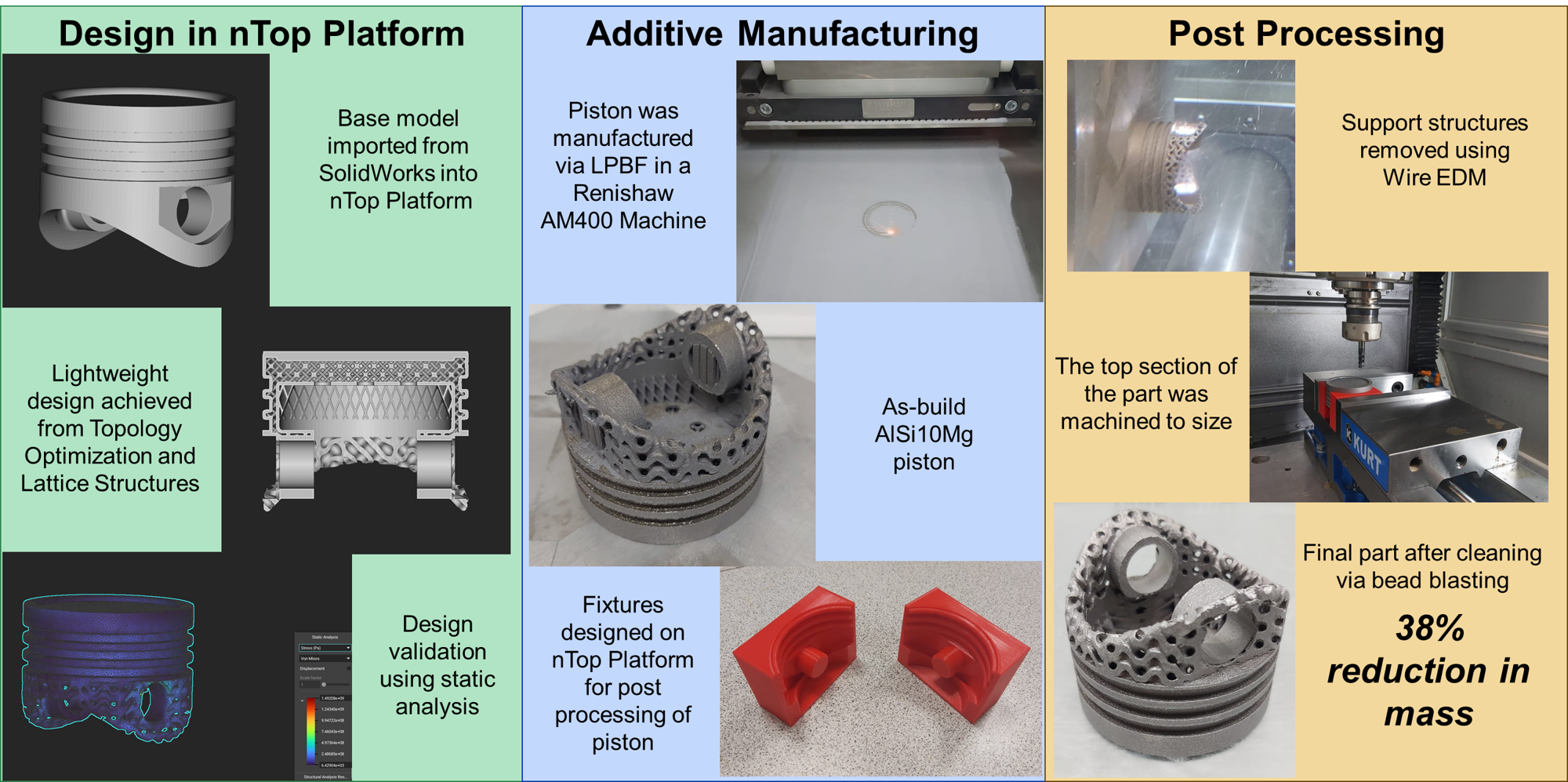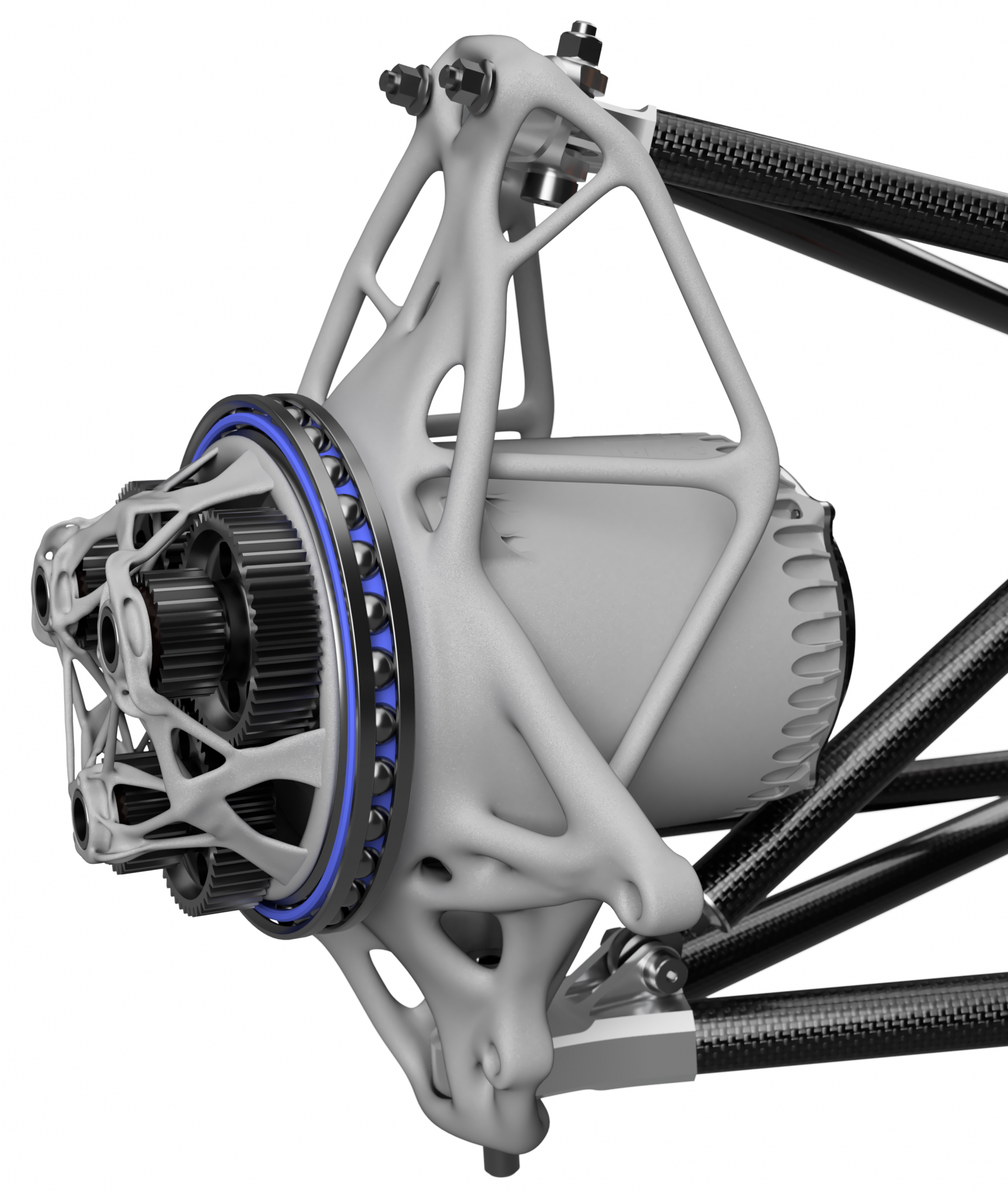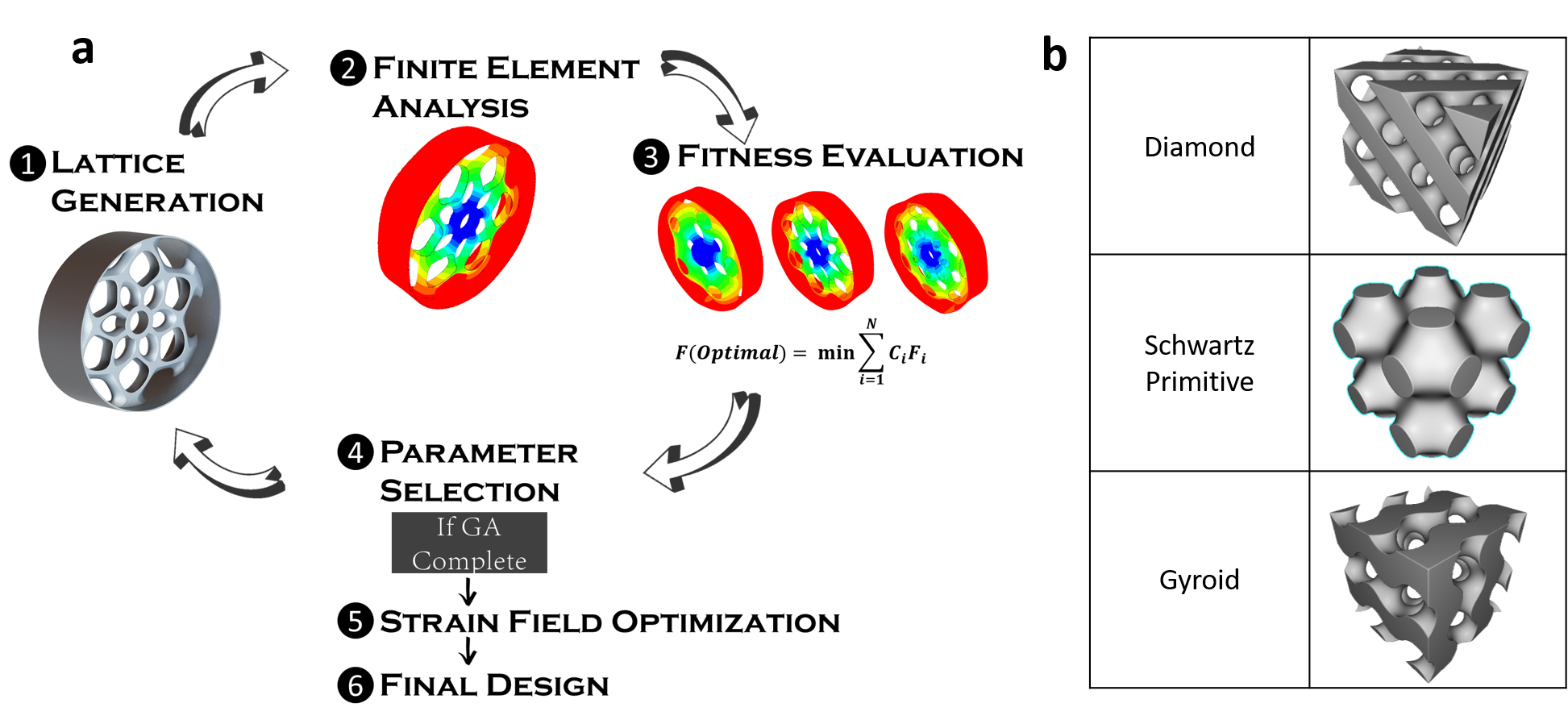The 2021 nTop Ed Challenge winners announced

Written by nTop
Published on April 13, 2021
Today, we are thrilled to announce the winners of our 2021 nTop Ed Challenge. The challenge had an exceptional reception from students all around the world, submitting diverse projects spanning from engineering and product design to robotics and art.
Applicants of the 2021 nTopEd Challenge could submit work in the following categories: Product Design, Transportation, Sports, Architected Materials, and Other. What surprised us was that students using our next-generation software found themselves breaking boundaries working in a category we hadn’t thought of. In fact, we had more than a handful of submissions that fell under the Other category. The three top submissions will receive $1000 to further develop their projects and will be presenting their work on day three of our nTop Week: Engineering Design, April 26-29, 2021.
The judging panel
The 2021 nTopEd Challenge judging panel consisted of three nTop experts:
- Brad Rothenberg, nTop co-founder and CEO
- Maiki Vlahinos, nTop Senior Application Engineer
- Gabrielle Thelen, nTop Application Engineer
The submissions were assessed based on three criteria: presentation, innovation, and potential impact as well as the use of nTop.
The breakdown
We received submissions from students at over 30 Universities across 15 countries with Product Design being the most popular category resulting in nearly 60% of all submissions. 53% of those who submitted, including two of the three winners, have only been using nTop for less than six months. That shows that you can truly do great things with the software without being an expert in a short amount of time!
Top three submissions
Challenge: Design of a lightweight piston for Additive Manufacturing using nTop
Name: Karl Costello
University: Waterford Institute of Technology/SEAM Research Centre
Project Description: Pistons in internal combustion engines can move cyclically at speeds of 200 Hz. The energy required to keep the piston in motion is directly dependant on the mass of the piston assembly. Therefore, any mass reduction increases the overall efficiency of the engine. Using nTop, a lightweight piston was redesigned for AM. The redesign of this internal combustion engine key component can optimize the current technology that powers most cars today.
Why nTop? nTop was chosen for this project due to its unique feature that allows for generative design to be conducted within a single platform. The design process utilized included an iterative mechanical simulation and redesign for topology optimization methodology. Light weighting of the part was achieved by shelling, including a diamond lattice infill, followed by topology optimization. A stress thickness modifier was used to ensure the structural integrity of the part was maintained.

Challenge: Design of an upright for a Formula Student racecar using topology optimization and lattice structure
Name: Jan-Rickmer Luth, Jannes Briese, and the Lions Racing Team e.V.
University: TU-Braunschweig
Project Description: The team designed a suspension upright for a Formula Student racecar using topology optimization aiming for maximum strength at a minimal mass. This new version will be made from AlSi10Mg using selective laser melting and will connect the suspension rods of the car and the wheel area including the electric motor and gearbox. nTop's algorithms allowed the team to reduce the weight of the upright by about 40% compared to its cast predecessor using adaptive metamaterial such as internal lattice structures.
Why nTop? Using nTop's unique implicit modeling architecture allowed the team to work more closely with their topology optimization results than any other software. Additionally, the ability to create geometry features with the results of FEA simulations allowed them to use adaptive lattice structures and wall thicknesses to reduce the weight in low-stress areas of the part. With the reusability of nTop's workflows, the team was able to quickly iterate between different design space iterations.

Challenge: Reducing the Mass of Wind Turbine Generators with Implicit Modeling
Name: Austin Hayes
University: University of Colorado, Boulder
Project Description: Direct drive wind turbine generators have been advantageous to the wind industry due to improved efficiencies and reduced maintenance by removing a gearbox. However, to produce the same power at lower speeds without a gearbox, the generator diameter must increase which leads to a substantial mass increase. Think 220 tons of steel for a 5MW generator with a 6m diameter. Up to 80% of this mass is structural support to withstand the forces in the generator. TPMS lattices offer a means of light-weighting.
Why nTop? nTop’s implicit modeling speed truly enabled generator optimization due to its speed. The evolutionary algorithm required 1,600 lattice iterations only possible by quick lattice generation. We created the initial TPMS structure in nTop and coupled it to an FEA solver with a custom evolutionary algorithm coupling code. We then used the final strain field from the FEA solver as a field input to nTop to additionally optimize the functional grading.

Thank you
The quality and breadth of the projects we received were impressive, making the job of our judges a challenge. We would like to thank all those who participated and we are looking forward to supporting you in your next steps and future endeavors.
Don’t forget to watch their presentations at nTop Week: Engineering Design.

nTop
nTop (formerly nTopology) was founded in 2015 with the belief that engineers’ ability to innovate shouldn’t be limited by their design software. Built on proprietary technologies that upend the constraints of traditional CAD software while integrating seamlessly into existing processes, nTop allows designers in every industry to create complex geometries, optimize instantaneously, and automate workflows to develop breakthrough parts and systems in record time.




